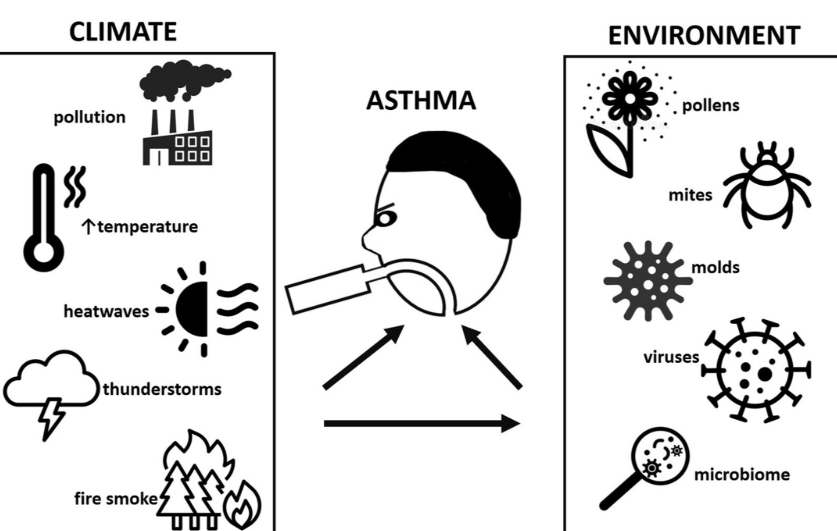Is Childhood Asthma Getting Worse Due to Climate Change?
Asthma is a common chronic respiratory disease in children, characterized by recurrent episodes of wheezing, shortness of breath, chest tightness, and coughing. These symptoms are often exacerbated by exposure to allergens, cold air, or exercise. Conditions that may cause asthma in children include allergic triggers, viral infections, and environmental factors.
Asthma is a common chronic respiratory disease in children, characterized by recurrent episodes of wheezing, shortness of breath, chest tightness, and coughing. These symptoms are often exacerbated by exposure to allergens, cold air, or exercise. Conditions that may cause asthma in children include allergic triggers, viral infections, and environmental factors.
What are the symptoms of asthma?
Recurrent episodes of wheezing, coughing, shortness of breath, and chest tightness, often occurring or worsening at night and/or in the early morning.

What are the characteristics of asthma attacks?
- Diverse triggers: Upper respiratory tract infections, allergen exposure, strenuous exercise, laughing, crying, and climate change are triggers.
- Recurrence: Sudden onset or paroxysmal exacerbation occurs when a trigger is encountered.
- Rhythmicity: Onset or worsening often occurs at night and in the early morning.
- Seasonality: Onset or worsening often occurs in autumn and winter or during seasonal changes.
- Reversibility: Antiasthmatic medications can usually relieve symptoms, with a significant remission period.

Prognosis of Childhood Asthma
- Severity:
Children with mild asthma, infrequent attacks, and easily controlled symptoms often have a good prognosis with long-term, standardized treatment. As they grow older, their attacks become significantly less frequent, and some may even become virtually attack-free. However, those with severe asthma, frequent attacks, and concurrent allergic conditions have a relatively poor prognosis, and lung function may be persistently affected.
- Treatment Compliance:
Children who strictly follow their doctor's orders, regularly use inhaled corticosteroids and other medications, and receive regular follow-up visits for treatment adjustments can effectively control their asthma, maintain good lung function, and achieve a quality of life approaching that of a normal child. Conversely, those who fail to take medication regularly or discontinue medication at random are more likely to experience relapses, compromising their prognosis.
- Environmental Factors:
Children whose living environment is low in allergens and irritants, and whose parents can effectively help their children avoid them, have a lower risk of asthma attacks and a better prognosis. Long-term exposure to polluted environments with high allergen content, such as pets or prolonged exposure to smog, can increase the risk of asthma attacks, significantly impair lung function, and ultimately impact their recovery.









